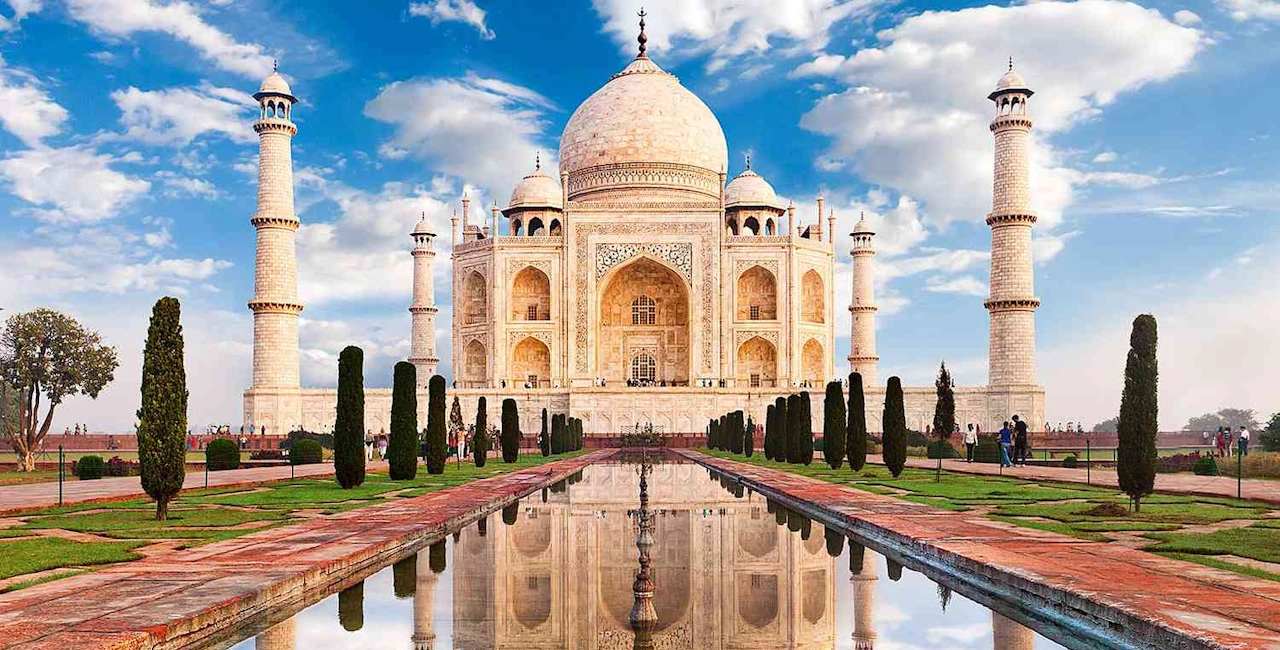The Taj Mahal, one of the most iconic monuments in the world, stands as a testament to love, architectural brilliance, and the rich history of India. Located in Agra, Uttar Pradesh, this magnificent mausoleum attracts millions of visitors each year, drawing admiration for its stunning beauty and the poignant love story behind its creation.
Historical Background
The Taj Mahal was commissioned by the Mughal Emperor Shah Jahan in 1632 in memory of his beloved wife, Mumtaz Mahal, who died during childbirth. The emperor, deeply grieved by her death, wanted to create a monument that would symbolize their eternal love and serve as her final resting place. Construction began in 1632 and continued for about 22 years, with the main mausoleum completed in 1643 and surrounding structures and gardens finished by 1653.
Architectural Brilliance
The Taj Mahal is a masterpiece of Mughal architecture, a blend of Indian, Persian, and Islamic styles. The principal architect, Ustad Ahmad Lahauri, along with a team of thousands of artisans, craftsmen, and laborers, brought this vision to life. The mausoleum is constructed from white marble inlaid with semi-precious stones, including jade, crystal, lapis lazuli, amethyst, and turquoise, forming intricate designs and calligraphy.
The central structure stands on a square plinth and consists of a large, central dome flanked by four smaller domes. The main dome, often referred to as an onion dome due to its shape, rises to about 73 meters (240 feet) and is crowned with a gilded finial. The four minarets, one at each corner of the plinth, are slightly tilted outward to protect the main structure in the event of an earthquake.
Gardens and Layout
The Taj Mahal is set within a vast Mughal garden, known as the Charbagh, symbolizing the Islamic concept of paradise. The garden is divided into four main quadrants by water channels, reflecting the four rivers of paradise described in the Quran. These channels converge at a central pool, which mirrors the image of the mausoleum, creating a breathtaking vista.
The meticulous symmetry of the garden and its layout enhances the visual appeal of the Taj Mahal. The entrance to the complex is through a grand gateway, inscribed with verses from the Quran, which leads to a long watercourse lined with fountains and trees, guiding the visitor’s gaze towards the marble edifice.
Symbolism and Significance
The Taj Mahal is more than just an architectural marvel; it is imbued with deep symbolic meanings. The use of white marble signifies purity and the divine, while the intricate floral designs and calligraphy represent paradise. The symmetrical design reflects the idea of balance and harmony, both in architecture and in life.
The monument also stands as a symbol of the Mughal Empire’s architectural and cultural zenith. It showcases the fusion of different cultural influences that characterized Mughal art and architecture. The Taj Mahal’s beauty and grandeur have inspired countless artists, poets, and historians over the centuries, making it a symbol of India’s rich heritage.
Preservation and Tourism
The Taj Mahal has faced various challenges over the years, including environmental pollution, wear and tear, and the pressures of mass tourism. Efforts have been made to preserve and protect this UNESCO World Heritage site, including restrictions on industrial activities in the vicinity, measures to control air pollution, and periodic restoration work.
Despite these challenges, the Taj Mahal continues to captivate visitors from around the world. Its ethereal beauty, especially under the changing light conditions of dawn, dusk, and the full moon, leaves an indelible impression on those who behold it. The monument remains a major tourist attraction, contributing significantly to the local and national economy.
Conclusion
The Taj Mahal is more than just a mausoleum; it is a symbol of love, an architectural wonder, and a cultural treasure. Its timeless beauty and historical significance continue to fascinate and inspire people across the globe. Visiting the Taj Mahal is not just an exploration of India’s architectural heritage, but also a journey into the depths of human emotion and the heights of artistic achievement. It stands as a poignant reminder of the enduring power of love and the timeless beauty of artistic expression.


0 Comment